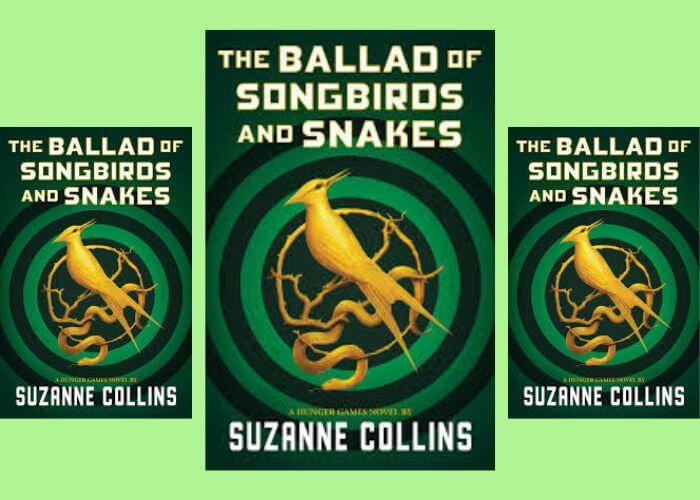Blog
The Ballad of Songbirds and Snakes – Book Review

Introduction
Sixty-four years before Katniss Everdeen would volunteer as a tribute and spark a revolution, the Capitol was still establishing its iron grip over the districts. Suzanne Collins returns to the world of Panem with The Ballad of Songbirds and Snakes, a prequel that explores the origins of tyranny through the eyes of an eighteen-year-old Coriolanus Snow—the future President Snow. This Hunger Games prequel offers readers a haunting glimpse into how monsters are made, delivering a character-driven piece and a cautionary tale that enhances our understanding of the original series.
Book Overview
Publication and Background
The Ballad of Songbirds and Snakes marks Collins’s triumphant return to the dystopian landscape that captivated millions. Published as a prequel novel to the beloved Hunger Games trilogy, this Hunger Games novel takes readers back to the tenth annual Hunger Games, where traditions were still forming and the spectacle was far from the polished entertainment seen in Katniss’s era.
Plot Summary
The story follows Coriolanus Snow as a struggling Academy student who becomes a mentor in the games. When he’s assigned Lucy Gray Baird, the female tribute from District 12, his fortunes become intertwined with hers. The morning of the reaping sets in motion events that will shape both their destinies and reveal the true nature of power in Panem.
Genre and Connection
This prequel to The Hunger Games maintains the dystopian elements that made the original Hunger Games so compelling while serving as both a standalone work and an essential addition to the Hunger Games series. Fans who read the book will discover new layers to the gruesome world Collins created, with details that lend depth to our understanding of how the Capitol’s oppression began.
Character Analysis
Coriolanus Snow
Collins masterfully presents eighteen-year-old Coriolanus as a complex protagonist, making readers initially empathize with his struggles before gradually revealing his true nature. The transformation from sympathetic youth to the villain we know from the Hunger Games trilogy is both believable and chilling. His relationship with his cousin Tigris provides glimpses of humanity that make his eventual corruption all the more tragic.
Lucy Gray Baird
Lucy Gray stands as a fascinating counterpoint to Katniss Everdeen. While both are tributes from District 12, Lucy Gray’s musical talents and free spirit set her apart. Her connection to the Covey and her ability to captivate audiences both inside the arena and outside the arena make her a memorable character who challenges Coriolanus’s worldview.
Supporting Characters
Dr. Volumnia Gaul, the head gamemaker, serves as a sinister mentor figure whose influence on Coriolanus cannot be overstated. Sejanus Plinth, originally from District 2, represents the internal conflict of those caught between worlds. These supporting characters, along with Tigris and the Grandma’am, provide crucial context for understanding how Coriolanus becomes the man we know him to be.
Themes and Social Commentary
Power and Corruption
The novel explores authority and oppression through Coriolanus’s gradual moral decline. Collins demonstrates how the pursuit of power can corrupt even those who begin with good intentions, making this a powerful examination of how tyranny develops.
Class Warfare and Social Inequality
The stark divide between the districts and the Capitol is explored with nuance, showing how economic desperation can drive moral compromise. Collins’s themes of friendship, loyalty, and betrayal are woven throughout, creating a rich tapestry of human motivation.
Writing Style and Structure
Narrative Approach
Collins employs a third-person perspective that allows readers to see both Coriolanus’s internal justifications and the reality of his actions. The world-building expands our understanding of Panem without contradicting established lore from the original series.
Pacing and Structure
While some readers might find certain sections lengthy, the deliberate pacing allows for deep character development. Collins shines in her ability to balance action sequences with psychological exploration, creating a narrative that feels both familiar and fresh.
Strengths of the Book
Complex Moral Ambiguity
The novel’s greatest strength lies in its refusal to present simple heroes and villains. Even knowing Coriolanus’s ultimate fate, readers find themselves drawn into his perspective, understanding his motivations even as they recognize his moral failings.
Rich Historical Context
For any Hunger Games fan, this book provides essential backstory that enhances appreciation of the original Hunger Games. The evolution from the rough 10th Hunger Games to the polished spectacle of later years is fascinating to witness.
Character Development
Collins proves once again why she’s considered a master of young adult fiction. The psychological depth she brings to her characters, particularly in showing how Coriolanus becomes the man we know from the trilogy, is exceptional.
Areas for Improvement
Length and Pacing
While the detailed exploration of character development is generally a strength, some readers might find certain sections unnecessarily lengthy. The book occasionally dwells on details that, while interesting, don’t always advance the plot significantly.
Comparison to Original Impact
Following the cultural phenomenon of the Hunger Games trilogy presents challenges. While this prequel is well-crafted, it inevitably faces comparison to the revolutionary impact of Katniss’s story.
Cultural Impact and Reception
Critical and Fan Reception
Book reviews have generally praised Collins’s return to Panem, with many noting how the novel enhances understanding of the original series. The movie The Ballad of Songbirds has further expanded the story’s reach, introducing new audiences to this dystopian world.
Contribution to Literature
The novel continues Collins’s exploration of how societies normalize violence and oppression. In our current political climate, these themes remain strikingly relevant, offering readers a lens through which to examine real-world issues.
Final Verdict
Overall Assessment
The Ballad of Songbirds and Snakes succeeds as both a compelling standalone novel and a valuable addition to the Hunger Games series. Collins has created a work that enhances rather than diminishes the legacy of her original trilogy.
Recommendation
This book will particularly appeal to readers who enjoyed the moral complexity of the original Hunger Games and want to delve deeper into the world of Panem. Those interested in dystopian literature, character studies, and explorations of power will find much to appreciate.
Conclusion
Suzanne Collins has crafted a worthy addition to the Hunger Games universe with The Ballad of Songbirds and Snakes. By showing us the origins of President Snow’s tyranny, she reminds us that understanding evil doesn’t mean excusing it. The novel serves as both entertainment and warning, demonstrating how easily societies can slide toward oppression when citizens fail to remain vigilant.
Whether you’re a longtime fan of the Hunger Games trilogy or new to Collins’s work, this prequel offers a rich, complex narrative that will stay with you long after the final page. It’s a testament to Collins’s skill as a storyteller and her continued relevance as a voice in dystopian literature.
For those who have yet to experience this journey back to Panem, the opportunity awaits to see the Hunger Games world through new eyes and understand how the seeds of revolution were planted long before Katniss ever volunteered as tribute.
